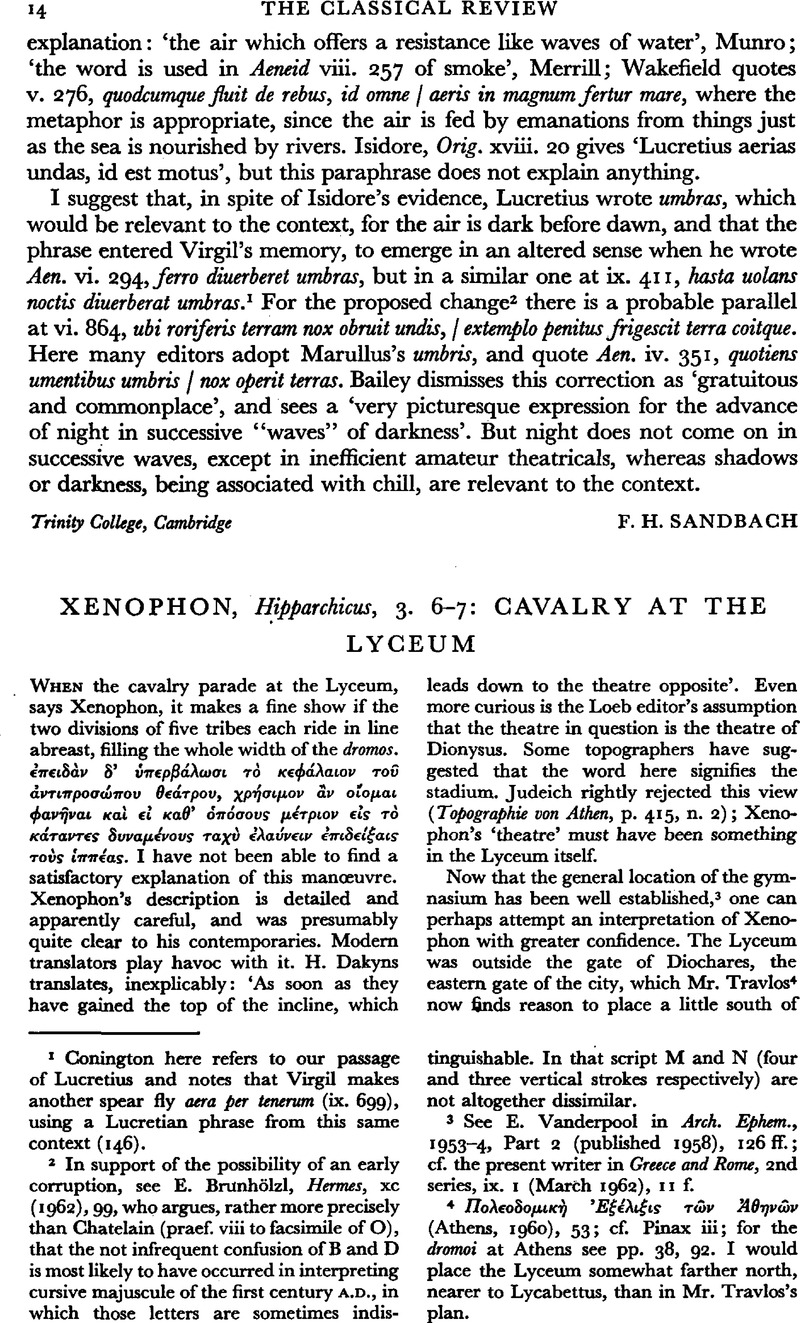No CrossRef data available.
Article contents
Xenophon, Hipparchicus, 3. 6–7: Cavalry at the Lyceum
Published online by Cambridge University Press: 27 February 2009
Abstract

Information
- Type
- Review Article
- Information
- Copyright
- Copyright © The Classical Association 1963
References
page 14 note 2 In support of the possibility of an early corruption, see Brunhölzl, E., Hermes, xc (1962), 99Google Scholar, who argues, rather more precisely than Chatelain (praef. viii to facsimile of O), that the not infrequent confusion of B and D is most likely to have occurred in interpreting cursive majuscule of the first century A.D., in which those letters are sometimes indistinguishable. In that script M and N (four and three vertical strokes respectively) are not altogether dissimilar.
page 14 note 3 See Vanderpool, E. in Arch. Ephem., 953–954Google Scholar. Part 2 (published 1958), 126 ff.; cf. the present writer in Greece and Rome, 2nd series, ix. 1 (March 1962), 11 f.Google Scholar
page 14 note 4 Πολεοδομικ⋯ Ἐξ⋯λιξς τ⋯ν Ἀθην⋯ν (Athens, 1960), 53; cf. Pinax iii; for the dromoi at Athens see pp. 38, 92. I would place the Lyceum somewhat farther north, nearer to Lycabettus, than in Mr. Travlos's plan.
page 15 note 1 Hipparchicus, iii. 2Google Scholar. On cavalry manoeuvres, see Anderson, J. K., Ancient Greek Horsemanship (University of California Press, 1961)Google Scholar. For θ⋯ατρον note Xenophon, Hell. vii.4.31 (cf.J.Kondis, τ⋯ ἰερ⋯ν τ⋯ς [Athens, 1958], 9).

